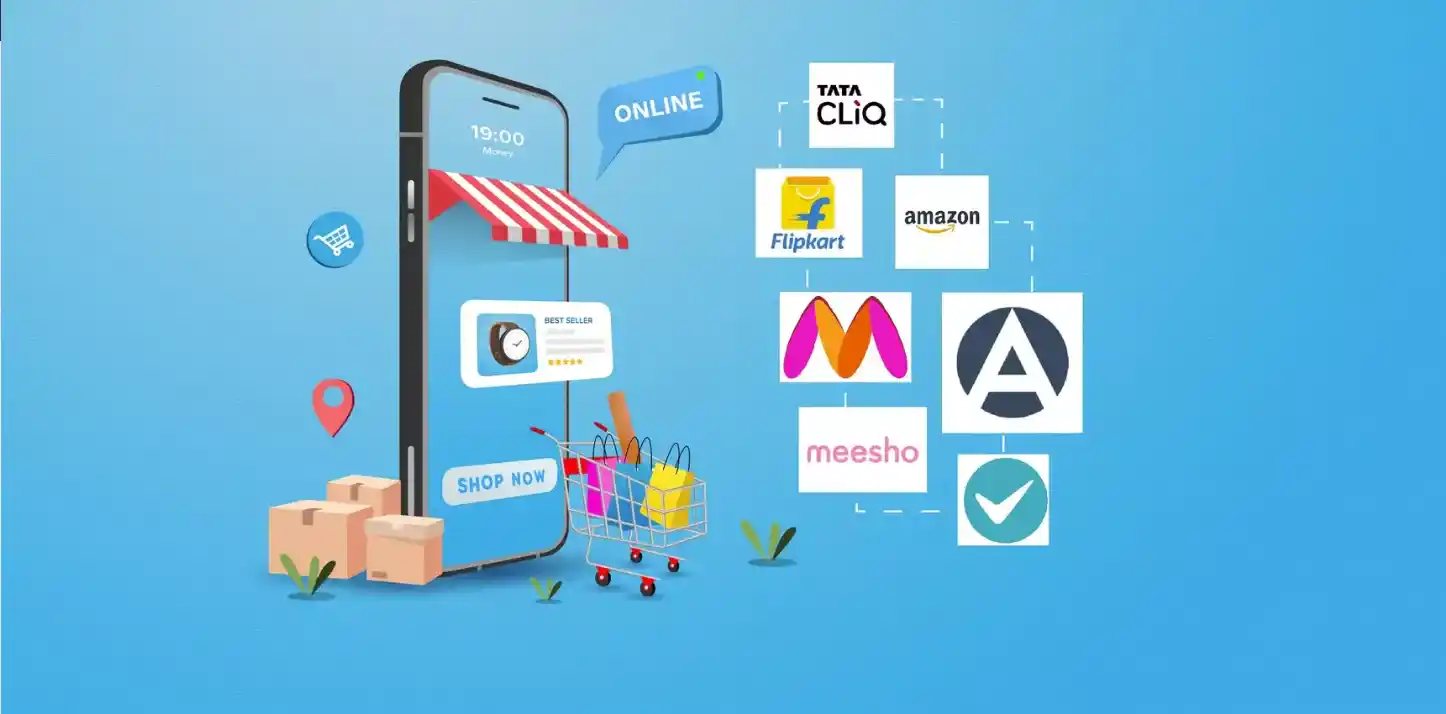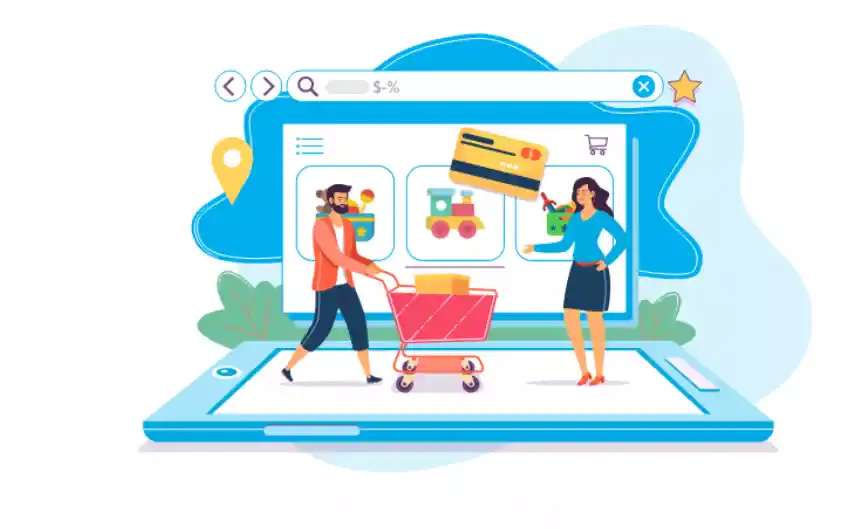Table of Contents
By 2027, mobile platforms are projected to account for 62% of global e-commerce profits, as highlighted by Statista in 2023. This staggering forecast underscores the immense potential within the mobile commerce sector, compelling numerous businesses to venture into the profitable realm of e-commerce app development.
The pivot towards e-commerce app development is not merely a trend; it’s a strategic move to tap into a broader market, enhance customer interaction with tailored experiences, and significantly increase both conversion rates and revenue.
But venturing into e-commerce app development presents its own set of questions: How does one construct a robust e-commerce app? What are the tangible benefits, and what methodologies ensure success?
What Is E-commerce App Development?
E-commerce app development is the strategic process of designing and launching mobile applications that facilitate online sales and marketing for businesses. This development journey begins with comprehensive market research and meticulous planning, advances to the intricate phase of product design, progresses through detailed development and rigorous testing, and culminates in the successful deployment of the application.

E-commerce App Development: Mastering 7 Easy Steps
Dive into E-commerce App Development with our expert guide, outlining the crucial steps to transition from an idea to a successful launch. Here’s what it takes:
1. Understanding Your Audience
- In E-commerce App Development, the key to success lies in deeply understanding your target audience. Identifying the specific demographics, preferences, and purchasing behaviors of your users is essential, whether you’re creating a specialized app for B2B clients like construction firms or targeting the broader B2C market.
- Tailoring your app to meet the unique needs of your audience, such as enabling streamlined bulk ordering for businesses, ensures a more relevant and effective user experience.
2. Defining Clear Objectives
- In E-commerce App Development, defining clear, attainable objectives is crucial for steering the project toward success. Whether the aim is to dominate a particular market niche or to revolutionize the shopping experience, establishing precise goals enables the strategic prioritization of app features.
- For instance, an app for an eco-friendly boutique may set a specific target like boosting its conversion rates by 15%, providing a measurable indicator of the app’s performance and impact.

3. Choosing the Right Platform
- Selecting the ideal platform for your e-commerce app, whether iOS, Android, or both, is crucial in e-commerce app development.
- This decision should be guided by understanding your target audience’s preferences to ensure maximum reach and engagement.
- By aligning your development strategy with the platforms favored by your audience, you significantly enhance the potential for widespread adoption of your app.
4. Feature Selection
- E-commerce App Development shines when it balances innovative features with core functionalities. From seamless checkouts to personalized recommendations, ensure your app serves both basic shopping needs and introduces elements that set your brand apart.
- A seamless checkout process, personalized recommendations, and user-friendly registration ensure the app meets basic shopping needs while distinguishing your brand.
- In E-commerce App Development, the selection of features is crucial for balancing innovation with essential functionalities.
- Advanced search options, intuitive navigation, and detailed product visualizations enhance user experience. Incorporating robust security for transactions and real-time tracking, along with offering personalized shopping experiences, can significantly elevate your e-commerce app.

5. Budgeting and Planning
- In E-commerce App Development, selecting the right features is crucial for balancing innovation with core functionalities, ensuring the app meets user needs while standing out.
- This step involves integrating essential features like intuitive navigation, secure payment gateways, and personalized shopping experiences, alongside advanced options like AR previews and AI-driven recommendations, to create a compelling, user-friendly shopping environment.
- Effective budgeting and planning are foundational for successful E-commerce App Development.
- It involves a detailed assessment of project scope, essential features, and the allocation of resources between in-house teams and external partners.
6. Designing UI and UX
- In E-commerce App Development, designing an exceptional UI/UX is crucial for engaging users.
- By harmonizing aesthetics with functionality, your app can offer a seamless and delightful shopping journey.
- Aim for a clean, user-friendly interface that simplifies navigation and enhances the browsing experience, making every interaction with your fashion app enjoyable and intuitive. This approach ensures your app is not just usable, but a joy to explore.
7. Launching an MVP
- Launching an MVP is a strategic move in E-commerce App Development. It means releasing a product with just enough features to attract early adopters and validate your concept in the real market.
- This phase is crucial for gathering valuable user feedback, which informs further development and refinement.
- It’s about making your vision tangible, testing its viability, and iterating based on actual user experiences to fine-tune your app for maximum impact and success.

What are the 3 types of e-commerce?
E-commerce, the digital marketplace’s backbone, operates across three primary models, each catering to different market needs and interaction dynamics. These include:
- Business-to-Business (B2B): This model facilitates transactions between two businesses, such as a manufacturer and a wholesaler, or a wholesaler and a retailer. It’s characterized by high-volume trade and often involves customized orders.
- Business-to-Consumer (B2C): B2C e-commerce connects businesses directly with consumers, offering products or services through online platforms. This model is most familiar to the general public, encompassing everything from online retail to digital services.
- Consumer-to-Consumer (C2C): Enabling transactions between consumers, often through a third-party platform, C2C e-commerce includes sites where individuals can sell, buy, or trade goods and services among themselves, such as online marketplaces or auction sites.
Conclusion
Understanding the distinct types of e-commerce—Business-to-Business (B2B), Business-to-Consumer (B2C), and Consumer-to-Consumer (C2C)—is essential for anyone looking to navigate the vast and varied landscape of online commerce. Each model caters to different segments of the market, from transactions among businesses in B2B, direct sales to consumers in B2C, to the peer-to-peer marketplace of C2C.
Recognizing the unique characteristics and opportunities each type offers can empower entrepreneurs, businesses, and consumers alike to make informed decisions, strategize effectively, and ultimately thrive in the digital marketplace. As the world of e-commerce continues to evolve, staying abreast of these foundational categories will remain a cornerstone for success in the digital economy.